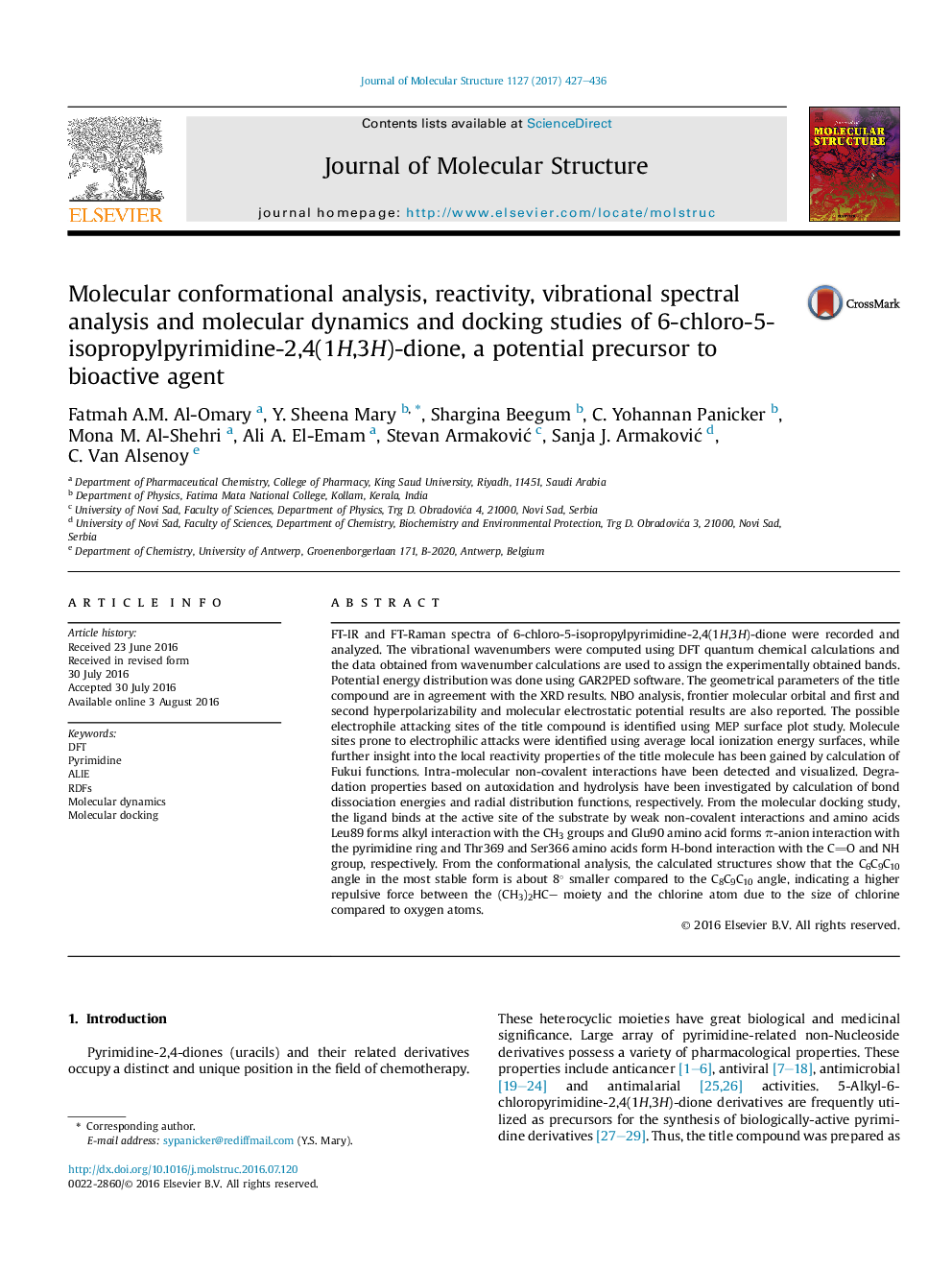| کد مقاله | کد نشریه | سال انتشار | مقاله انگلیسی | نسخه تمام متن |
|---|---|---|---|---|
| 1407552 | 1501690 | 2017 | 10 صفحه PDF | دانلود رایگان |
• IR and Raman spectra are interpreted theoretically and experimentally.
• The wave numbers are assigned by PED analysis.
• The geometrical parameters are in agreement with the XRD data.
• Docking gives the inhibitory activity of the title compound.
FT-IR and FT-Raman spectra of 6-chloro-5-isopropylpyrimidine-2,4(1H,3H)-dione were recorded and analyzed. The vibrational wavenumbers were computed using DFT quantum chemical calculations and the data obtained from wavenumber calculations are used to assign the experimentally obtained bands. Potential energy distribution was done using GAR2PED software. The geometrical parameters of the title compound are in agreement with the XRD results. NBO analysis, frontier molecular orbital and first and second hyperpolarizability and molecular electrostatic potential results are also reported. The possible electrophile attacking sites of the title compound is identified using MEP surface plot study. Molecule sites prone to electrophilic attacks were identified using average local ionization energy surfaces, while further insight into the local reactivity properties of the title molecule has been gained by calculation of Fukui functions. Intra-molecular non-covalent interactions have been detected and visualized. Degradation properties based on autoxidation and hydrolysis have been investigated by calculation of bond dissociation energies and radial distribution functions, respectively. From the molecular docking study, the ligand binds at the active site of the substrate by weak non-covalent interactions and amino acids Leu89 forms alkyl interaction with the CH3 groups and Glu90 amino acid forms π-anion interaction with the pyrimidine ring and Thr369 and Ser366 amino acids form H-bond interaction with the CO and NH group, respectively. From the conformational analysis, the calculated structures show that the C6C9C10 angle in the most stable form is about 8° smaller compared to the C8C9C10 angle, indicating a higher repulsive force between the (CH3)2HC– moiety and the chlorine atom due to the size of chlorine compared to oxygen atoms.
Figure optionsDownload as PowerPoint slide
Journal: Journal of Molecular Structure - Volume 1127, 5 January 2017, Pages 427–436
